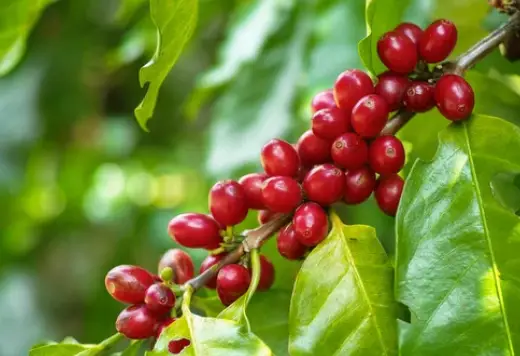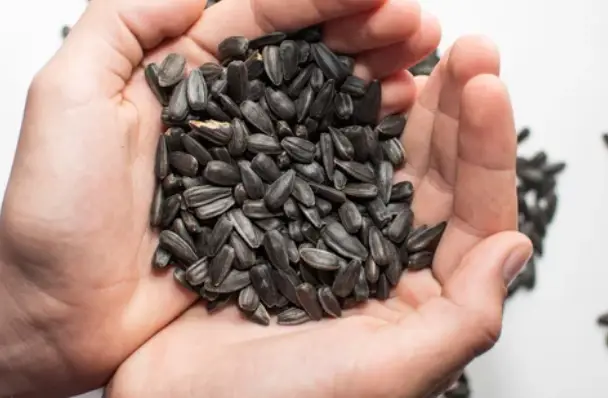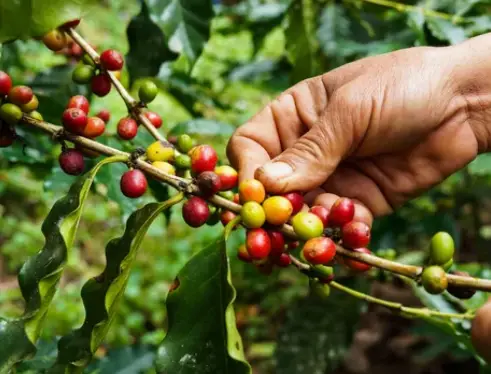If you have ever thought of growing your own coffee plant there are a few things in this post you will need to know.
Growing your own coffee can be a rewarding and fulfilling experience.
Not only do you get to enjoy the taste of freshly brewed, home-grown coffee, but you also get to be more environmentally friendly by reducing your carbon footprint and supporting sustainable agriculture.
Here’s a guide on how you can start growing your own coffee at home.

1) Choose the right location
Coffee plants thrive in warm, humid environments with plenty of sunlight. If you live in a region with a temperate climate, you may need to provide your coffee plants with some protection from the cold.
The best location for your coffee plants will have well-draining soil and receive at least six hours of direct sunlight per day.
2) Select the right coffee plant
There are two main types of coffee plants: Arabica and Robusta. Arabica plants produce a sweeter, smoother coffee with less caffeine, while Robusta plants produce a stronger, more bitter coffee with more caffeine.
If you’re just starting out, it’s best to choose Arabica plants as they are easier to grow and require less maintenance.
3) Prepare the soil
Coffee plants prefer well-draining soil that is rich in organic matter. If your soil doesn’t drain well, consider adding compost or peat moss to help improve the structure. Coffee plants also prefer a slightly acidic soil with a pH between 6 and 6.5. You can test the pH of your soil using a soil pH test kit, which is available at most gardening stores.
4) Plant your coffee seeds or seedlings

You can either start your coffee plants from seeds or purchase seedlings from a nursery. If you’re starting from seeds, it’s best to plant them in small pots or seedling trays.
Fill the pots with a mixture of soil and compost, and plant the seeds about 1/4 inch deep. Water the seeds well and place them in a warm, sunny location.
If you’re using seedlings, choose plants that are at least 6 inches tall and have a healthy root system. Plant the seedlings in pots or containers that are at least 12 inches deep, and water them well after planting.
5) Care for your coffee plants
Coffee plants require regular watering, but be careful not to over-water as this can lead to root rot. Water your plants deeply once or twice a week, depending on the weather and soil conditions.
Coffee plants also benefit from fertilization, so consider adding a balanced fertilizer to the soil every month or so.
6) Harvest and process your coffee beans
It will take about three to four years for your coffee plants to mature and produce fruit. When the fruit is ripe, it will turn from green to bright red.
To harvest the beans, pick the fruit and remove the outer layers to reveal the beans inside.
Next, you’ll need to dry and roast the beans to turn them into the familiar brown color we all know and love. There are several methods for drying and roasting coffee beans, including sun drying, oven drying, and using a commercial coffee roaster.
Once the beans are roasted to your desired level of darkness, they’re ready to be ground and brewed into delicious coffee.
7) Enjoy your homegrown coffee
Growing your own coffee takes patience and dedication, but the end result is well worth the effort.
Not only will you have the satisfaction of knowing that you grew your own coffee, but you’ll also get to enjoy the unique flavor and aroma of freshly roasted, homegrown beans.
So why not give it a try? With a little bit of care and attention, you’ll be sipping on your own homegrown coffee in no time.
Here are a few additional things that should be included when growing your own coffee:

- Choosing the right coffee plant variety: In addition to Arabica and Robusta, there are many different varieties of coffee plants available, each with its own unique characteristics. Some popular varieties include Bourbon, Caturra, and Typica. It’s worth doing some research to find the right variety for your climate and growing conditions.
- Providing the right environment: In addition to the right location and soil, coffee plants also need the right temperature, humidity, and sunlight to thrive. If you live in a region with a colder climate, you may need to provide your plants with some protection from the elements.
- Pruning and training your coffee plants: Proper pruning and training can help your coffee plants grow strong and produce more fruit. This may involve pruning off excess branches and shoots, and training the plant to grow in a particular shape or direction.
- Pest and disease management: Coffee plants are susceptible to a variety of pests and diseases, including coffee rust, leaf miners, and coffee berry disease. It’s important to regularly inspect your plants for signs of pests or disease, and take appropriate action if necessary. This may involve using pesticides, fungicides, or other treatment methods.
- Harvesting and processing coffee beans: In addition to picking and drying the beans, you’ll also need to remove the outer layers of the fruit to reveal the beans inside. There are several methods for doing this, including wet processing and dry processing. Once the beans are cleaned and dried, they’ll need to be roasted to develop their full flavor and aroma.
- Roasting and brewing your homegrown coffee: There are many different methods for roasting and brewing coffee, and it can take some experimentation to find the right method for your tastes. Some popular methods include using a stovetop coffee roaster, an electric coffee roaster, or a manual coffee grinder. Once the beans are roasted, you’ll need to grind them and brew them using a coffee machine or other brewing methods.
- Enjoying and sharing your homegrown coffee: Finally, the best part of growing your own coffee is getting to enjoy the fruits of your labor. Whether you’re sipping a cup of coffee on your own or sharing it with friends and family, there’s nothing quite like the taste of freshly roasted, homegrown beans. You might also consider selling or gifting your homegrown coffee to others, or entering it in a local coffee competition.
Final Thoughts
Growing your own coffee can be a rewarding and fulfilling experience that allows you to enjoy the taste of freshly brewed, home-grown coffee while also supporting sustainable agriculture.
While it takes patience and dedication to grow and harvest your own coffee beans, the end result is well worth the effort.
By following the tips and guidance outlined in this post, you can successfully grow and harvest your own coffee plants and experience the unique flavor and aroma of freshly roasted, homegrown beans.
Whether you’re a seasoned gardener or a beginner, there’s no reason why you can’t grow your own coffee and enjoy the benefits of homegrown coffee.




